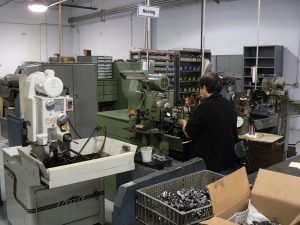Honing is used primarily on a workpiece that demands the most accurate, and stringent of tolerances such as cylinders of internal combustion engines. Honing also improves the geometric form of the surface and can perfect surface finish of tubing or bores. The hone is turned in the bore while being moved in and out of the workpiece, removing stock and providing a high-quality finish.
Our honing capabilities include honing of tubes, blocks, molds, or complex shapes, made of metal, plastics, ceramics, or composite materials. During the honing process, honing stones are used to abrade the part surface, removing imperfections and creating a smoother, flatter surface. In the case of cylindrical components, honing processes can be used to create a truer surface, improving the roundness of the inner diameter. The characteristic cross-hatch pattern left on the metal surface after honing is also very desirable for retaining fluid-based lubricants in mechanical applications. Due to the simplicity of the tooling and ability of the tool to improve the roundness of the part, there are many instances in which honing is a faster and more accurate option than ID grinding or hard turning processes.

